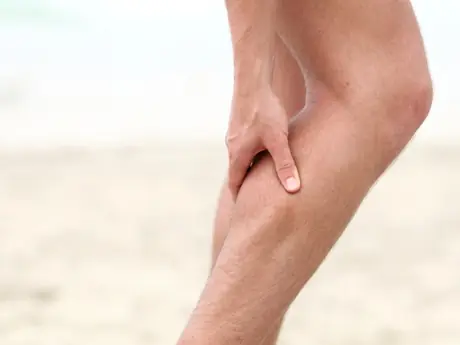Recovering After Your First Race
To ensure that you're optimally recovered before your second race, jump-starting the recovery process immediately after the first race is essential. Here is a quick outline of the ideal recovery process.
1. Hydrate as soon after your race as possible with Gatorade or an electrolyte drink. You want something with sugar to stimulate the insulin response.
2. Eat a small meal or snack that contains a 4:1 ratio of carbohydrates to protein. If you can handle eating more than a small meal, eat as much as you can.
3. Perform a quick cooldown. If you're more experienced, this can be a very light jog for 10 to 15 minutes. If you're a beginner, or are very sore, walk for 10 to 15 minutes. Stretch major muscle groups and anything that is sore or tight. Roll out any nagging injuries or problem areas.
4. Take an ice bath as soon as you can after the race.
5. Eat another decent-sized, healthy meal 2 to 3 hours after the race.
6. Nap, put your feet up, or get a massage.
7. Take an Epsom salt bath before bed.
8. Roll out on a foam roller or with the stick, and stretch well.
9. Get plenty of sleep.
While this routine is extensive, it will drastically improve your rate of recovery, and help get you back to training for the second race as quickly as possible.
More: 5 Golden Rules of Marathon Recovery
Running a Marathon Within Three Weeks of the First
If your second marathon is within three weeks of the first, there is very little you can do to increase your fitness level. As such, you should focus on recovery and getting your legs as fresh as possible.
In the first few days, you want to get your legs moving to help bring fresh blood and nutrients to your damaged muscles. Sitting around and resting will only make you stiff and sore.
If you're a higher-mileage runner and your legs feel good the day after the first marathon, you can go for a very easy 30- to 40-minute run. If you're feeling sore or not adapted to the mileage, you can aqua jog for 30 to 45 minutes, or spin on the bike using a low gear and high turnover. Both solutions will pump blood to your muscles and facilitate the healing process.
After three or four days, your legs should start to feel more normal. At this point, you should ease back into normal running mileage. Chuck Engle, who has won 148 marathons and is the only person to ever win 50 marathons in 50 states, suggests bringing your mileage back up to 70 percent of your weekly max. Maintain this volume for the next 10 to 14 days, depending on the date of your next race. This will enable you to keep your aerobic conditioning intact without sacrificing recovery.
More: 3 Phases of Post-Marathon Recovery
If your marathons are only one or two weeks apart, your training will end here. If you happen to have another one or two weeks to train, you can run a few moderate workouts. A good workout would be two or three times 2 miles at 80 to 85 percent of your max heart rate with three minutes rest. Another option would be four to five times 1 mile at half-marathon pace with a short, 60- to 90-second recovery. Both these types of workouts will help you maintain fitness and aerobic conditioning, but aren't so tiring that you can't recover quickly from them.
- 2
- of
- 4
About the Author
Get ACTIVE on the Go


Couch to 5K®
The best way to get new runners off the couch and across the finish line of their first 5K.
Available for iOS | Android






Discuss This Article